Tom's Hardware Verdict
With a similar price to the EVGA 750 G6, the 750 GT will have a hard time convincing you to prefer it.
Pros
- +
+ Full power at 46 degrees Celsius
- +
+ Good build quality
- +
+ Tight load regulation at 12V
- +
+ Good transient response at 12V
- +
+ Good enough ripple suppression
- +
+ Longer than 17ms hold-up time
- +
+ Not noisy
- +
+ Low conducted EMI
- +
+ Low leakage current
- +
+ Fully modular
- +
+ Compatible with the alternative sleep mode
- +
+ Long cables
- +
+ Compact dimensions
- +
+ 7-year warranty
Cons
- -
Overall performance needs boosting
- -
Loose load regulation on the minor rails
- -
High inrush currents
- -
Not so efficient with light loads
- -
Not efficient 5VSB rail
- -
Low PF readings with 230V input
- -
Small distance between peripheral connectors
Why you can trust Tom's Hardware
The EVGA 750 GT uses an efficient platform provided by HEC, and it is not noisy, meeting the Cybenetics A- noise requirements. The overall performance is not high enough to match PSUs like the Corsair RM750x, the EVGA 750 G6, and the Cooler Master V750 Gold V2, meaning that the 750 GT cannot earn a place in our best PSUs article.
Another PSU line by EVGA, with the code name GT. Grand Tourer, is a sports car suitable for long-distance driving and high speeds. In IT terms, it could be a high-performance power supply with increased reliability even under high loads for prolonged periods. EVGA's GT series consists of three members with 650W, 750W, and 850W max power. The platform used is by HEC, and the seven-year warranty shows that the manufacturer is confident about this product's reliability.





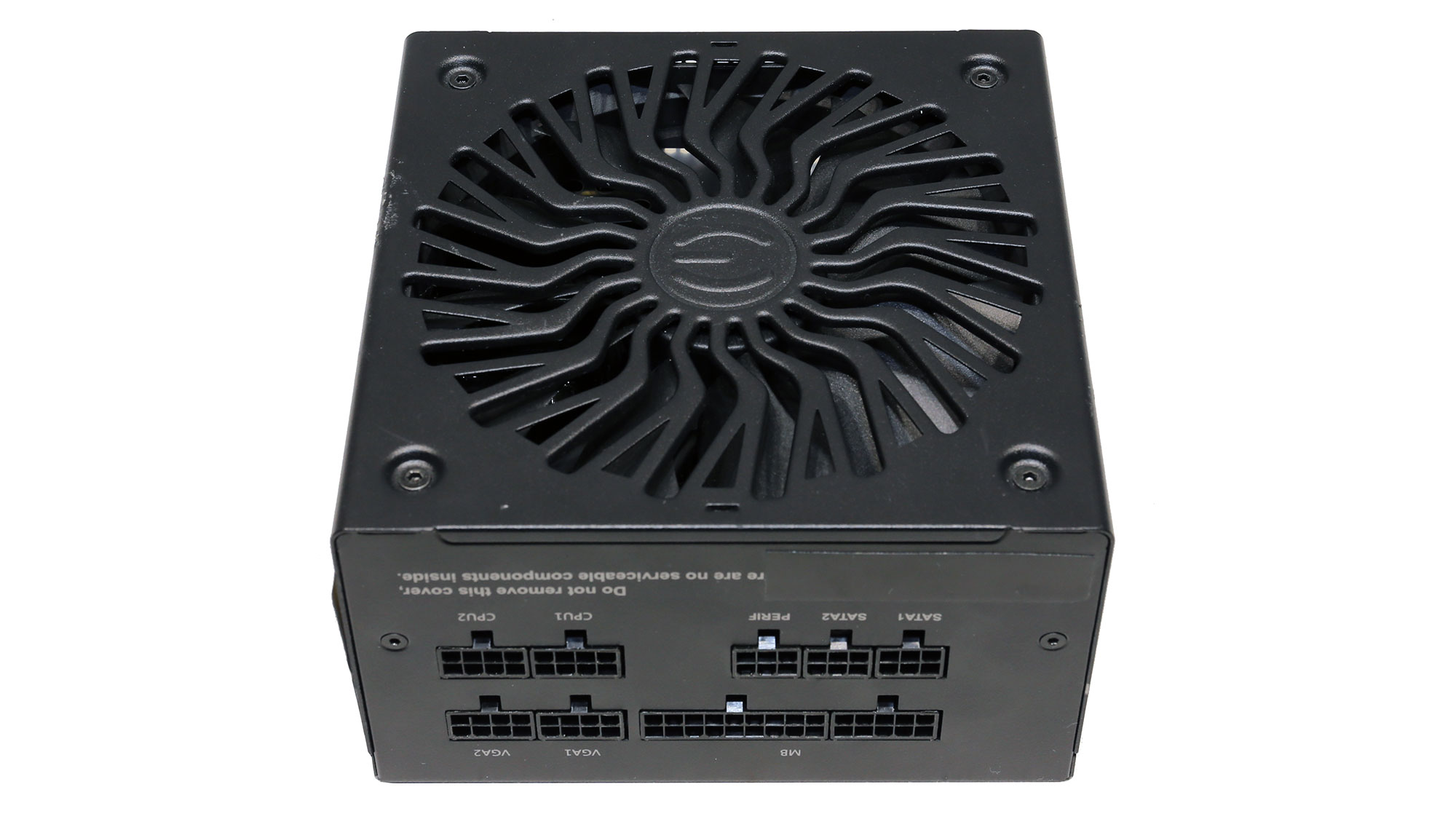


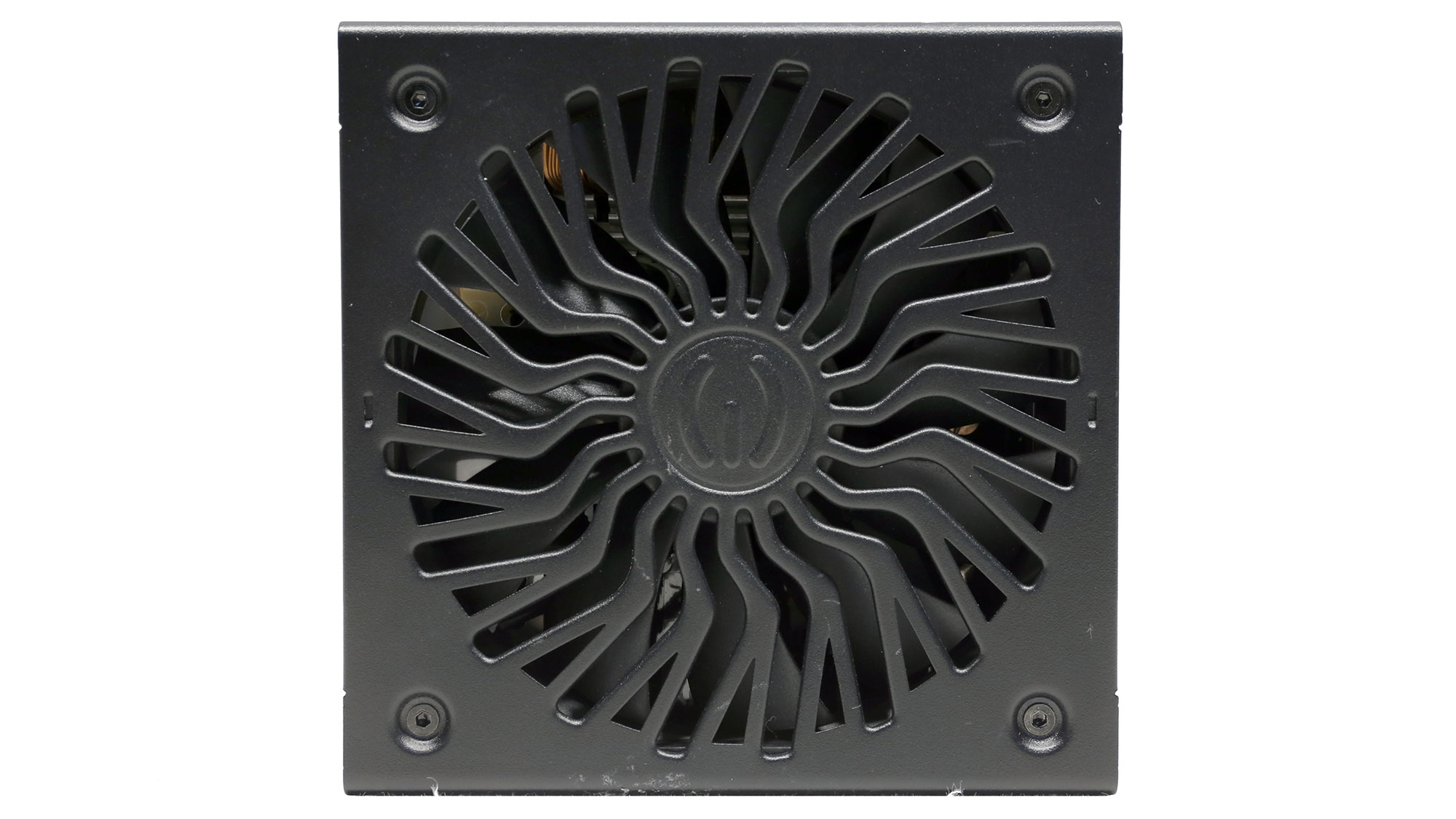
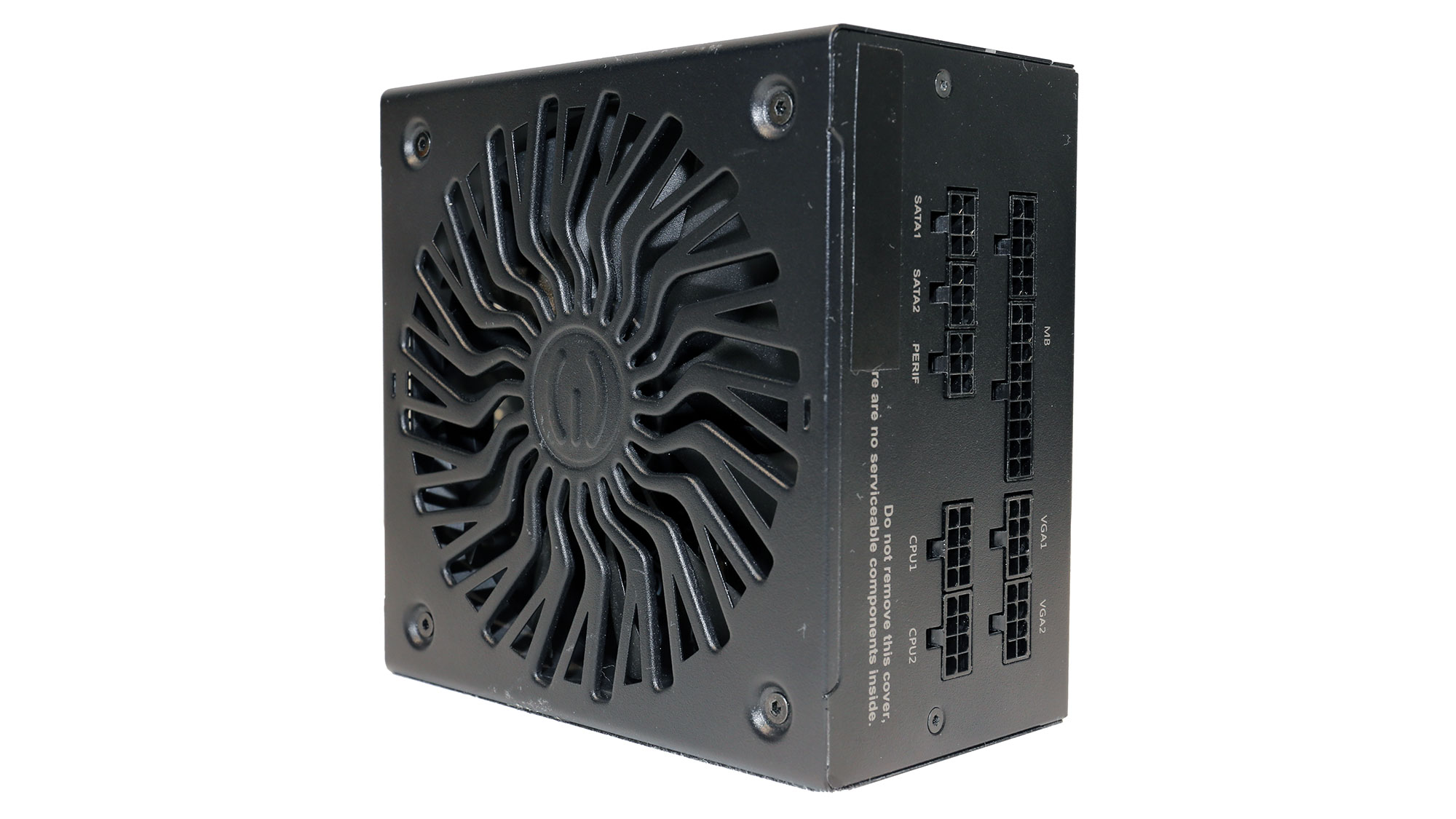
Like the other two of the line, the EVGA SuperNOVA 750 GT is a fully modular unit equipped with a fluid dynamic bearing fan for lower noise output and increased reliability. There is an auto-ECO mode, as EVGA calls it, meaning that the cooling fan won't spin at light loads.
Unfortunately, you cannot disable this feature and have the fan spinning at low speeds under light loads to keep the PSU cool in all cases. Finally, the 750 GT has a single +12V rail output, and it is rated as Gold in both Cybenetics and 80 PLUS programs, while its noise rating is Cybenetics-A-.
Specifications of EVGA SuperNOVA 750 GT
| Manufacturer (OEM) | HEC |
| Max. DC Output | 750W |
| Efficiency | 80 PLUS Gold, Cybenetics Gold (87-89%) |
| Noise | Cybenetics A- (25-30 dB[A]) |
| Modular | ✓ (fully) |
| Intel C6/C7 Power State Support | ✓ |
| Operating Temperature (Continuous Full Load) | 0 - 40°C |
| Over Voltage Protection | ✓ |
| Under Voltage Protection | ✓ |
| Over Power Protection | ✓ |
| Over Current (+12V) Protection | ✓ |
| Over Temperature Protection | ✓ |
| Short Circuit Protection | ✓ |
| Surge Protection | ✓ |
| Inrush Current Protection | ✓ |
| Fan Failure Protection | ✗ |
| No Load Operation | ✓ |
| Cooling | 135mm Fluid Dynamic Bearing Fan (S1352512H) |
| Semi-Passive Operation | ✓ |
| Dimensions (W x H x D) | 150 x 85 x 150mm |
| Weight | 1.61 kg (3.55 lb) |
| Form Factor | ATX12V v2.52, EPS 2.92 |
| Warranty | 7 Years |
Power Specifications of EVGA SuperNOVA 750 GT
| Rail | 3.3V | 5V | 12V | 5VSB | -12V | |
| Max. Power | Amps | 20 | 20 | 62.5 | 3 | 0.3 |
| Watts | 130 | 750 | 15 | 3.6 | ||
| Total Max. Power (W) | 750 |
Cables & Connectors of EVGA SuperNOVA 750 GT
| Description | Cable Count | Connector Count (Total) | Gauge | In Cable Capacitors |
|---|---|---|---|---|
| ATX connector 20+4 pin (600mm) | 1 | 1 | 18AWG | No |
| 4+4 pin EPS12V (700mm) | 2 | 2 | 18AWG | No |
| 6+2 pin PCIe (700mm+150mm) | 2 | 4 | 18AWG | No |
| SATA (550mm+100mm+100mm) | 2 | 6 | 18AWG | No |
| 4-pin Molex (550mm+100mm+100mm) | 1 | 3 | 18AWG | No |
| FDD Adapter (100mm) | 1 | 1 | 22AWG | No |
| AC Power Cord (1400mm) - C13 coupler | 1 | 1 | 18AWG | - |
The two EPS and the pair of PCIe cables have sufficient length so there won't be any compatibility problems even in large chassis. There are no in-cable caps, and all connectors use the standard 18AWG gauges. SATA and 4-pin Molex connectors are not as many as in other 750W Gold PSUs. Still, their amount will be enough for most users. Finally, the distance between the peripheral connectors is low, at 100mm.





Component Analysis of EVGA SuperNOVA 750 GT
We strongly encourage you to have a look at our PSUs 101 article, which provides valuable information about PSUs and their operation, allowing you to better understand the components we're about to discuss.
| General Data | - |
| Manufacturer (OEM) | HEC |
| PCB Type | Single Sided |
| Primary Side | - |
| Transient Filter | 4x Y caps, 3x X caps, 2x CM chokes, 1x MOV, 1x MPS HF81 (Discharge IC) |
| Inrush Protection | NTC Thermistor SCK-2R58 (2.5Ohm) & Relay |
| Bridge Rectifier(s) | 1x GBU1506P (800V, 15A @ 125°C) |
| APFC MOSFETs | 2x Infineon IPA60R125P6 (600V, 19A @ 100°C, Rds(on): 0.125Ohm) |
| APFC Boost Diode | 1x Infineon IDH06G65C6 (650V, 6A @ 145°C) |
| Bulk Cap(s) | 1x Nichicon (400V, 560uF, 2,000h @ 105°C, GG) |
| Main Switchers | 2x Infineon IPA60R120P7 (600V, 16A @ 100°C, Rds(on): 0.12Ohm) |
| APFC Controller | Champion CM6502UHHX |
| Resonant Controller | Champion CM6901T6X |
| Topology |
Primary side:APFC, Half-Bridge & LLC converter Secondary side: Synchronous Rectification & DC-DC converters |
| Secondary Side | - |
| +12V MOSFETs | 8x On Semiconductor NTMFS5C430NL (40V, 140A @ 100°C, Rds(on): 1.4mOhm) |
| 5V & 3.3V | DC-DC Converters: 8x Potens PDD3906 (30V, 51A @ 100°C, Rds(on): 6mOhm) PWM Controller(s): 2x ANPEC APW7073 |
| Filtering Capacitors |
Electrolytic: 6x Nippon Chemi-Con (2-5,000h @ 105°C, KZE), 6x Nippon Chemi-Con (4-10,000h @ 105°C, KY), 1x Rubycon (6-10,000h @ 105°C, ZLH) |
| Supervisor IC | Weltrend WT7527RA (OCP, OVP, UVP, SCP, PG) |
| Fan Controller | APW9010 |
| Fan Model | Globe Fan RL4Z S1352512H (135mm, 12V, 0.33A, Fluid Dynamic Bearing Fan) |
| 5VSB Circuit | - |
| Rectifier | 1x PFC PFR10L60CT SBR (60V, 10A) |
| Standby PWM Controller | Power Integrations TNY290PG |




This is HEC's TPK platform, used in the Cougar GX-F models. Although this platform is close to five years in production, still it is modern enough to easily meet the Gold efficiency requirements in both Cybenetics and 80 PLUS.
Get Tom's Hardware's best news and in-depth reviews, straight to your inbox.
Several vertical boards are used to save space on the main PCB and allow for increased distance between parts, for better airflow. To save some money, the PCB is single-sided. Thankfully, no compromises were made in the cooling fan and the caps.
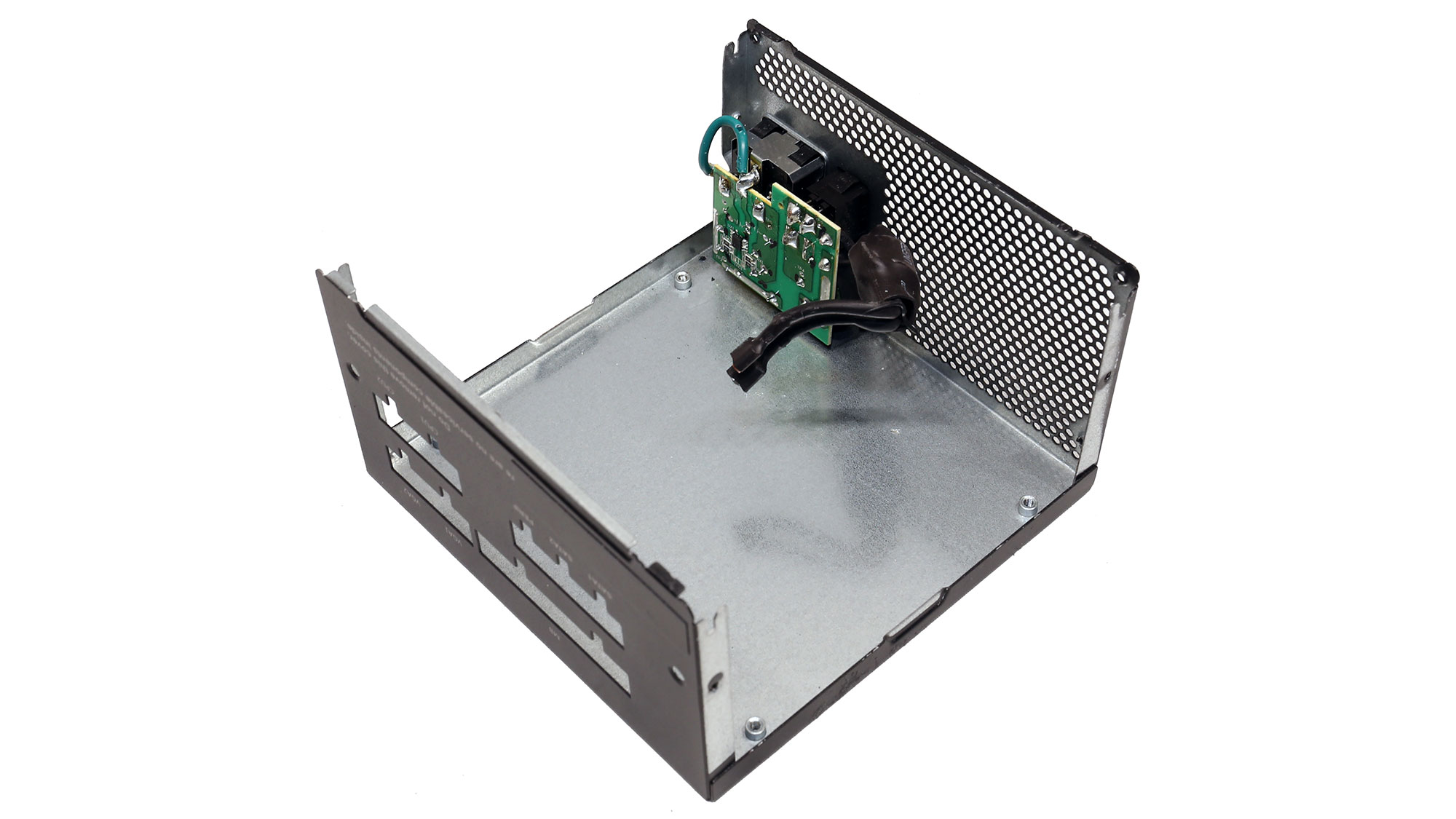






The transient/EMI filter includes four Y and three X caps, two CM chokes and an MOV. There is also a discharge IC to disconnect the bleeding resistor from the X caps while the PSU is in operation. This way, efficiency gets a small boost. The inrush protection is provided by an NTC thermistor and relay combination.

The single bridge rectifier can handle up to 15A of current.
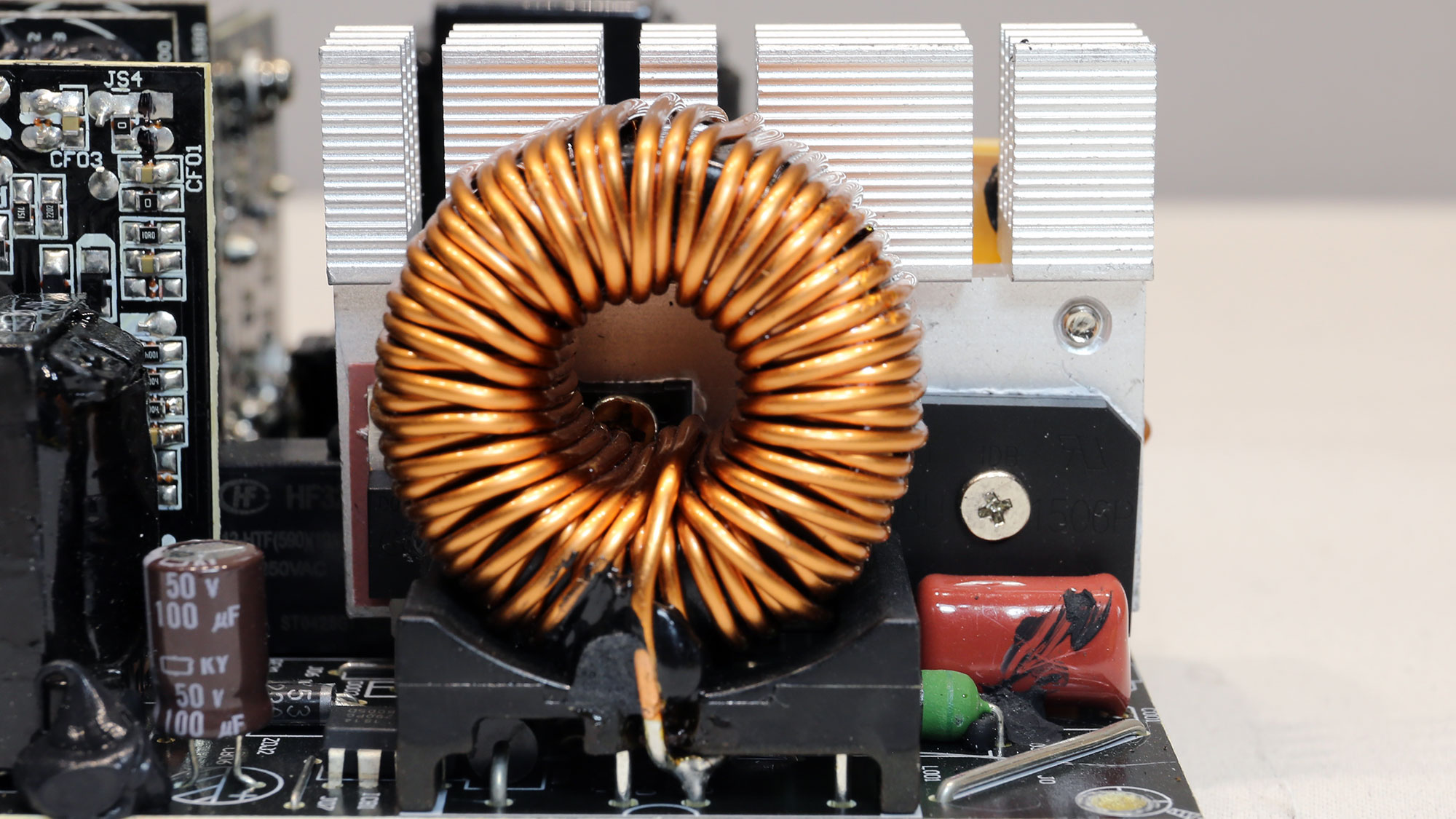
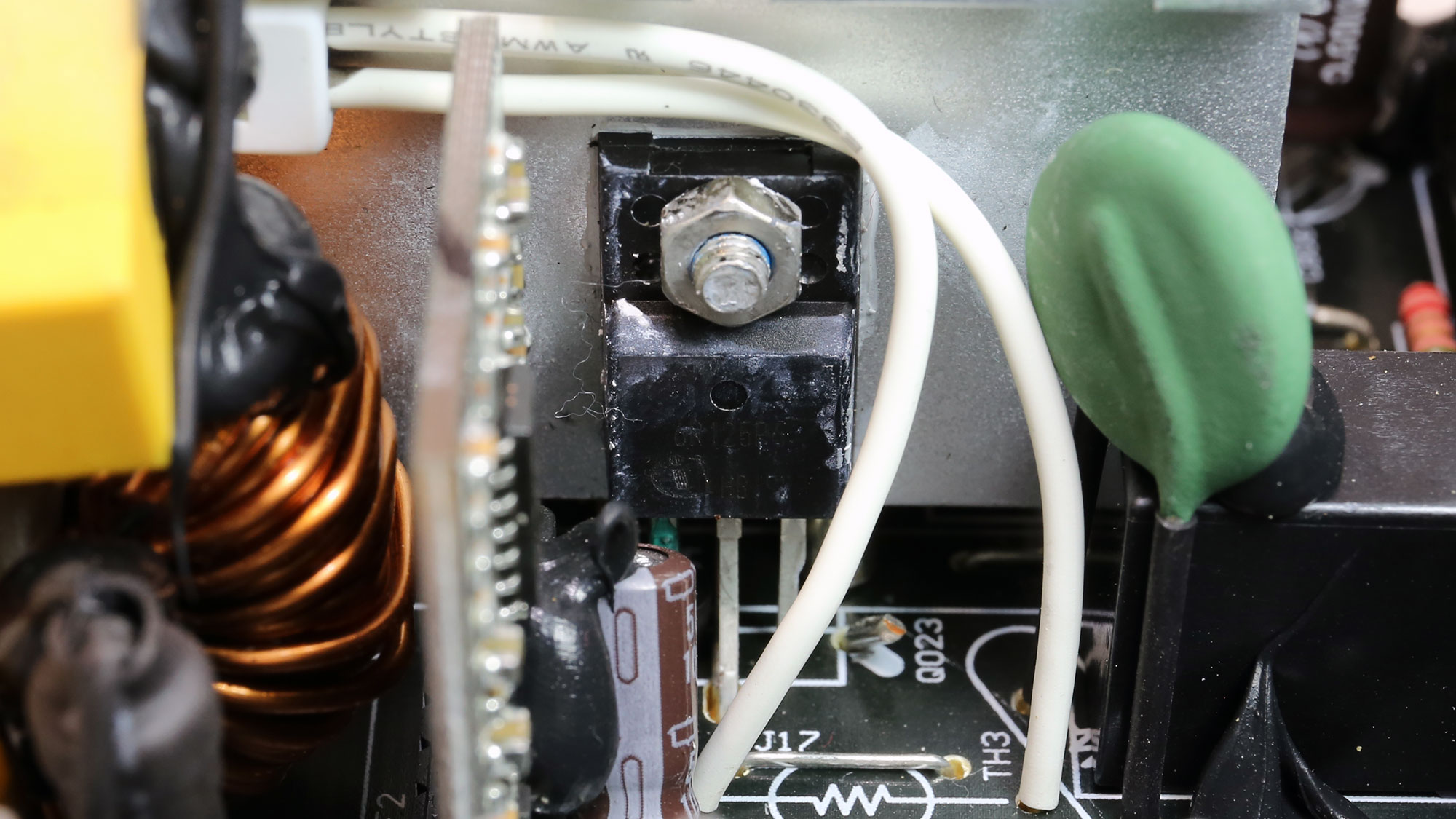



The APFC converter uses two Infineon FETs and a boost diode by the same brand. The bulk cap is by Nichicon and has enough capacity to provide a hold-up time slightly above 17ms. Lastly, the APFC controller is a Champion CM6502 IC.




The main FETs are by Infineon, and the LLC resonant controller is a Champion CM6901T6X, which is popular in high-efficiency platforms.
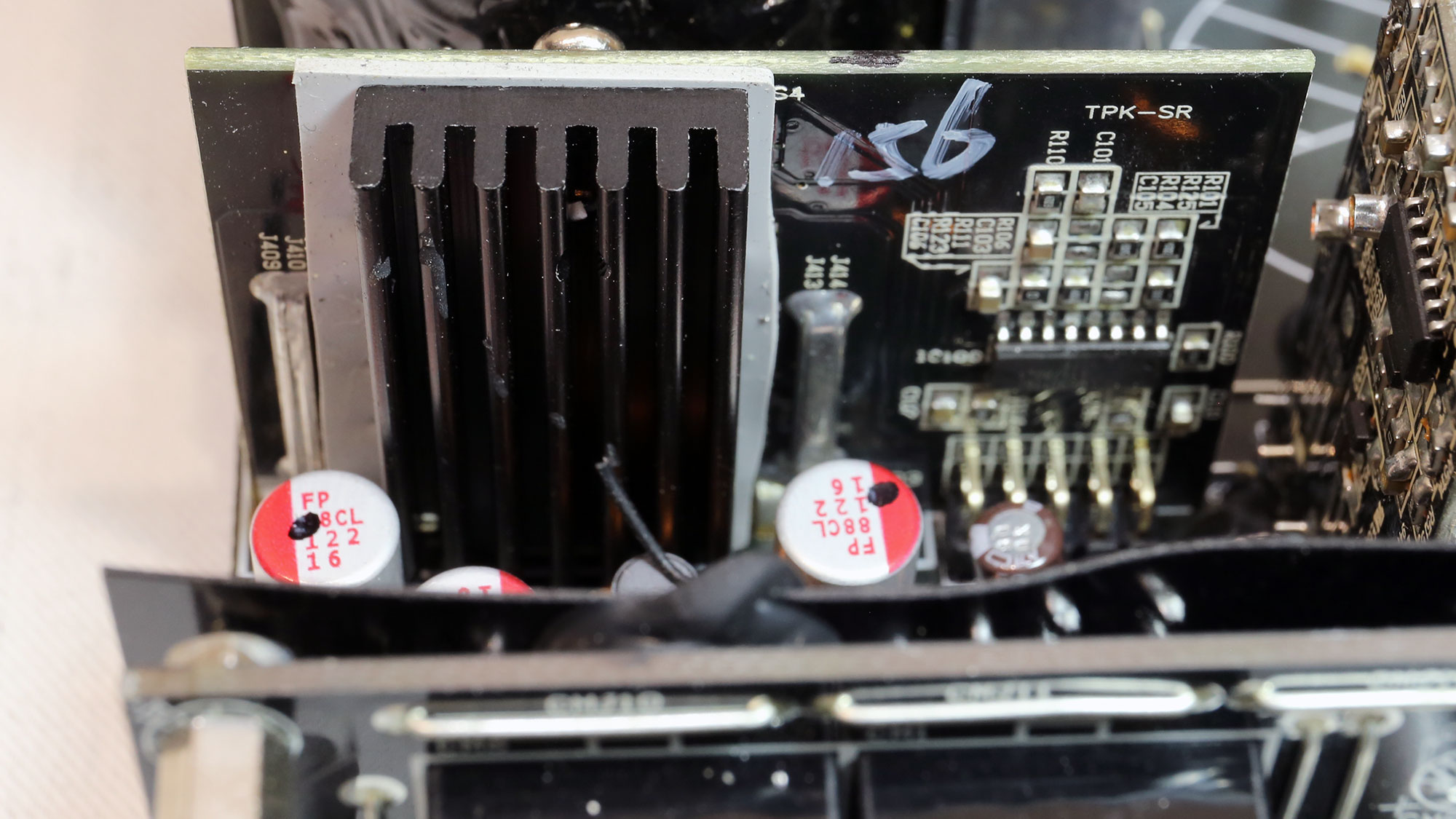

Eight FETs handle the +12V rail. The minor rails are generated through a pair of DC-DC converters.




The electrolytic filtering caps are of good quality, belonging to Japanese manufacturers, Chemi-Con and Rubycon. Lots of polymer caps are also used for ripple filtering.



The standby PWM controller a TNY290PG and the rectifier on the secondary side of this circuit is an SBR capable of handling up to 10A.



The modular board is small, and its main connecting bridges with the main PCB are six bus bars. Typically some caps are installed as a secondary ripple filtering layer.

The main supervisor IC is a Weltrend WT7527RA, supporting all essential protection features but OTP implemented through another circuit.
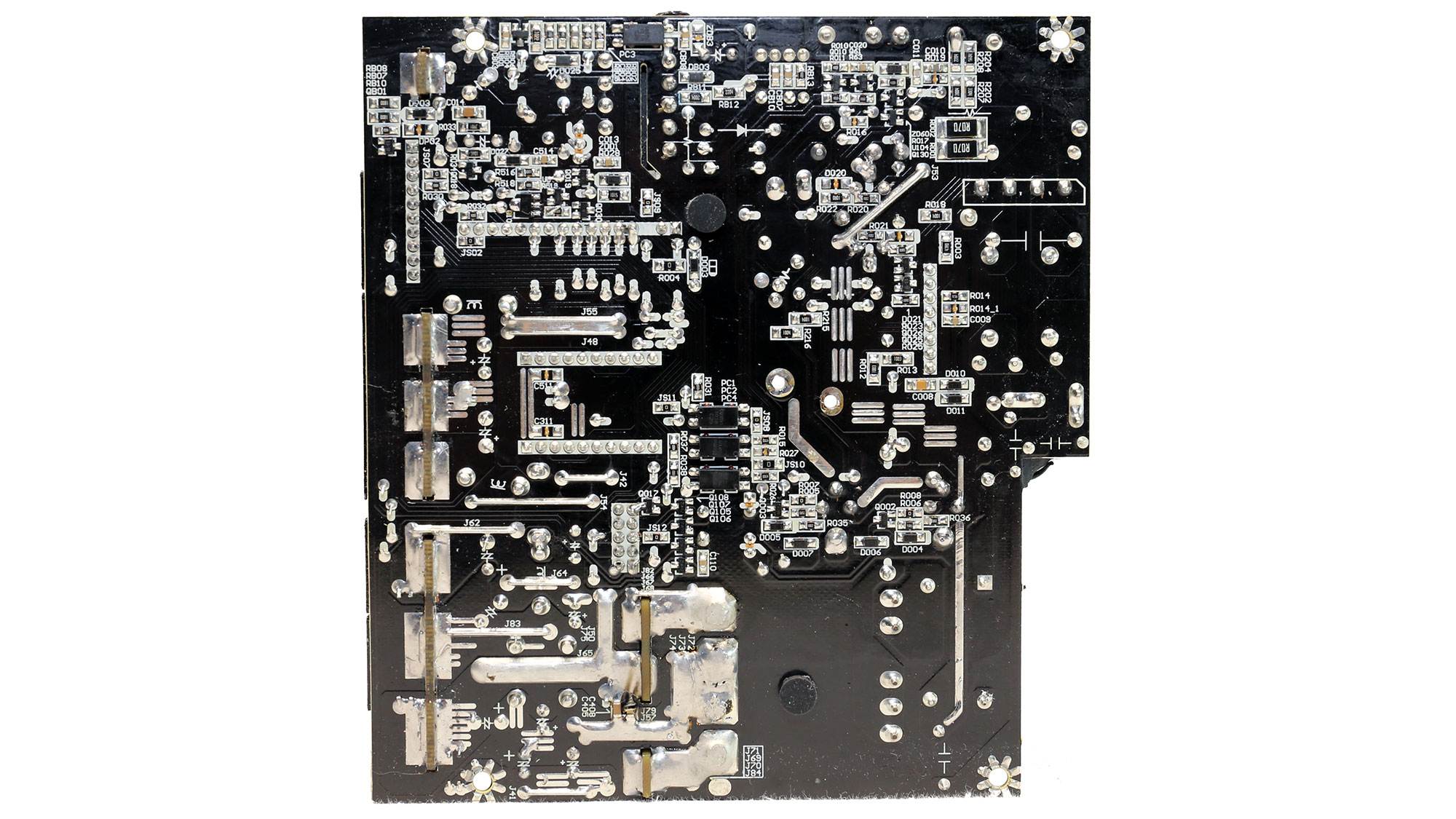


Soldering quality is decent. It could be better, though, in some parts.
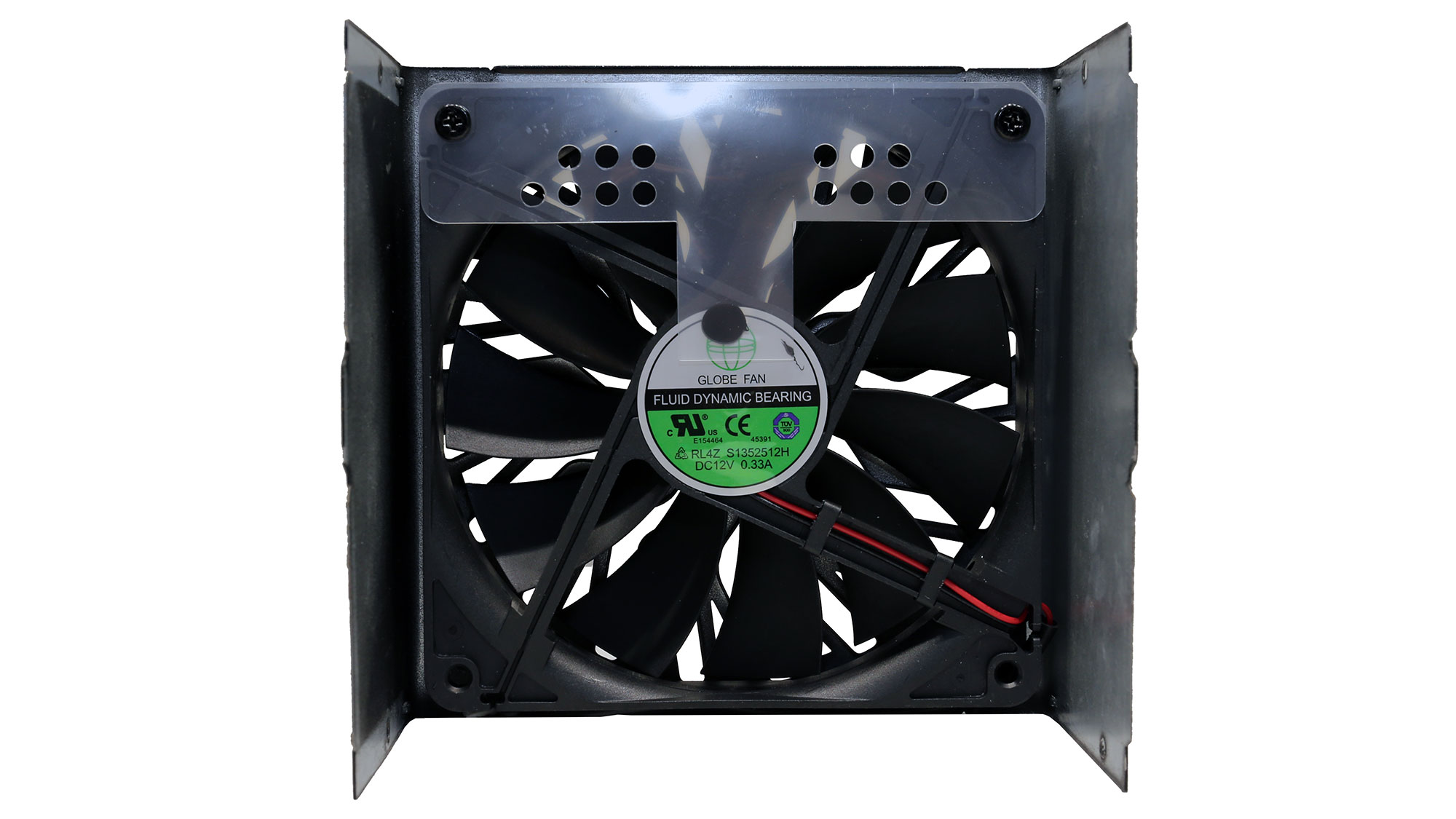


The cooling fan is by Globe Fan and uses a fluid dynamic bearing to have a long life.
MORE: Best Power Supplies
MORE: How We Test Power Supplies
MORE: All Power Supply Content
Current page: Specifications and Part Analysis
Next Page Load Regulation, Hold-Up Time, Inrush & Leakage Current, Efficiency and Noise
Aris Mpitziopoulos is a contributing editor at Tom's Hardware, covering PSUs.